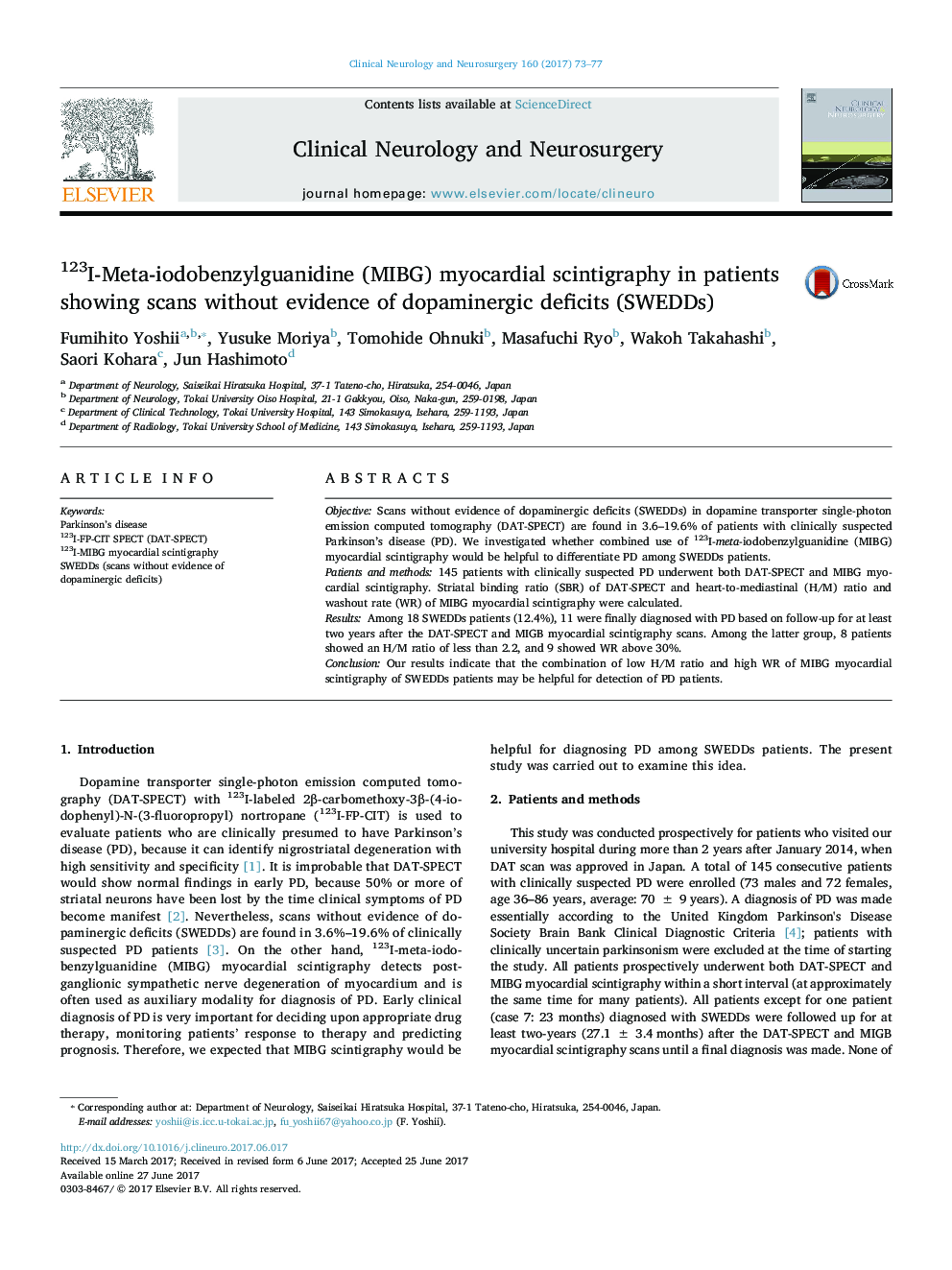| Article ID | Journal | Published Year | Pages | File Type |
|---|---|---|---|---|
| 5626945 | Clinical Neurology and Neurosurgery | 2017 | 5 Pages |
â¢We investigated if 123I-MIBG myocardial scintigraphy can identify PD among SWEDDs.â¢We encountered 18 SWEDDs (12.4%) among 145 patients with clinically suspected PD.â¢Eleven SWEDDS (61.1%) were finally diagnosed as PD after two years follow-up.â¢Low delayed H/M ratio (<2.2) and high WR (>30%) may be markers of PD among SWEDDs.
sObjectiveScans without evidence of dopaminergic deficits (SWEDDs) in dopamine transporter single-photon emission computed tomography (DAT-SPECT) are found in 3.6-19.6% of patients with clinically suspected Parkinson's disease (PD). We investigated whether combined use of 123I-meta-iodobenzylguanidine (MIBG) myocardial scintigraphy would be helpful to differentiate PD among SWEDDs patients.Patients and methods145 patients with clinically suspected PD underwent both DAT-SPECT and MIBG myocardial scintigraphy. Striatal binding ratio (SBR) of DAT-SPECT and heart-to-mediastinal (H/M) ratio and washout rate (WR) of MIBG myocardial scintigraphy were calculated.ResultsAmong 18 SWEDDs patients (12.4%), 11 were finally diagnosed with PD based on follow-up for at least two years after the DAT-SPECT and MIGB myocardial scintigraphy scans. Among the latter group, 8 patients showed an H/M ratio of less than 2.2, and 9 showed WR above 30%.ConclusionOur results indicate that the combination of low H/M ratio and high WR of MIBG myocardial scintigraphy of SWEDDs patients may be helpful for detection of PD patients.
